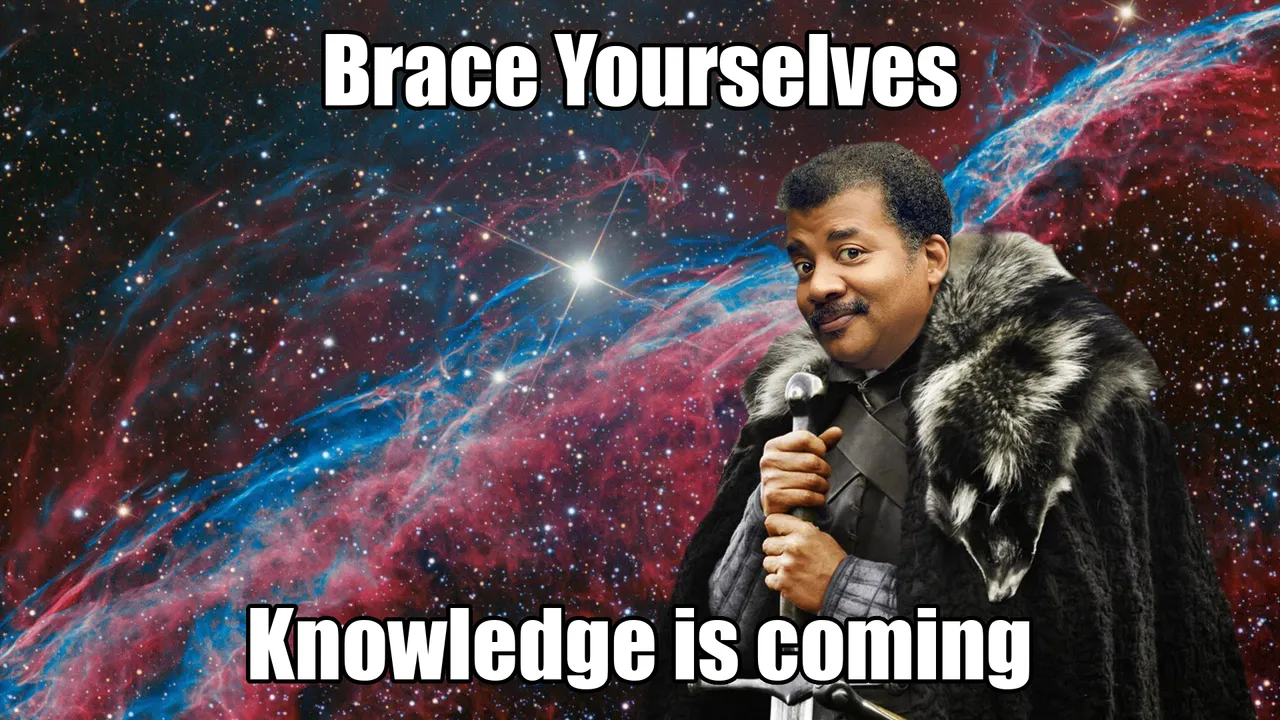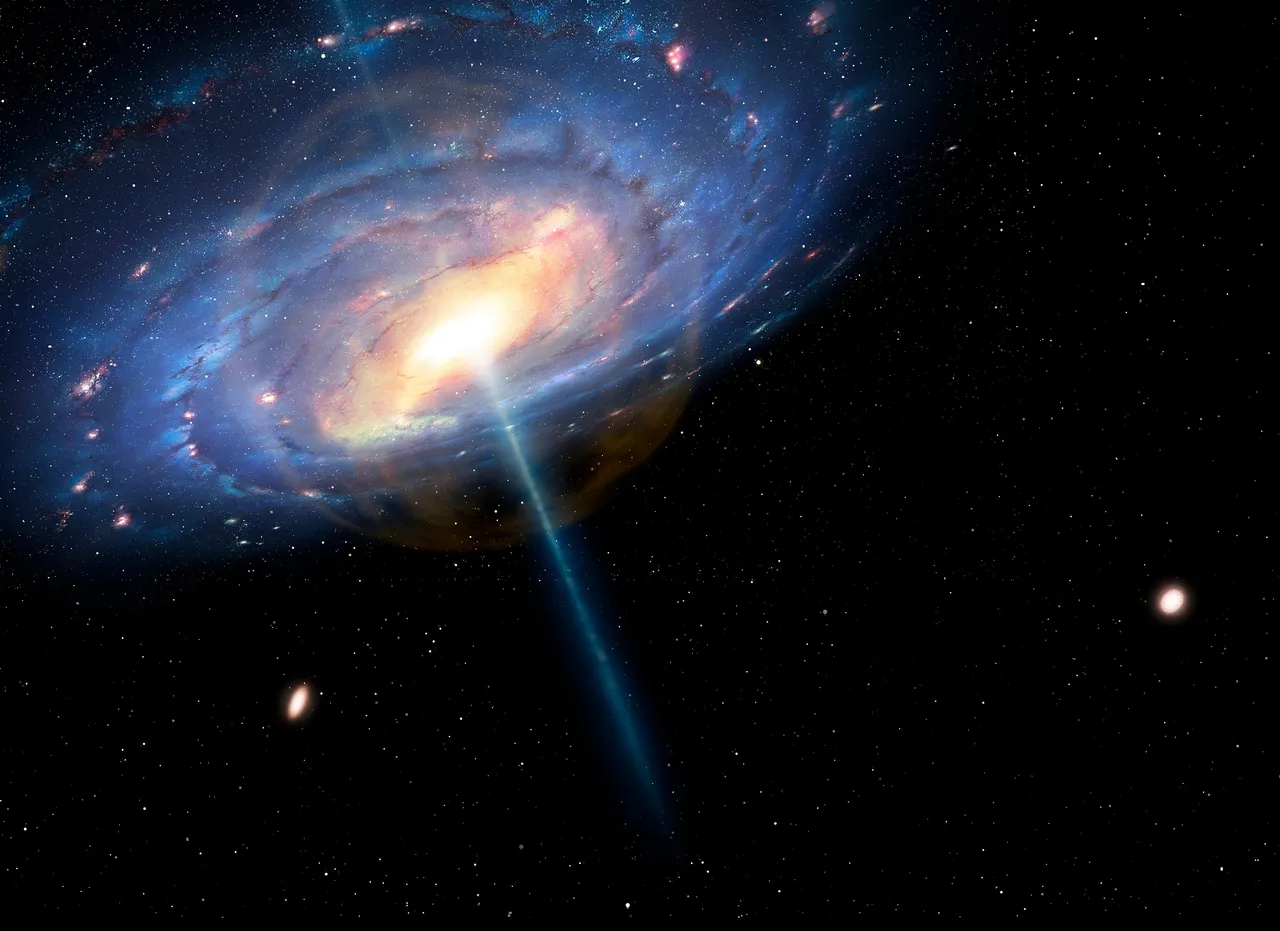As part of my day job, I write breaking news for The New Historian, a history/archaeology news website. Once and a while I come across something so nuts that, while it's not technically "history," it's something I've just got to write about. One of the latest stories I pitched about a giant shockwave from a six-million-year-old explosion in the center of the Milky Way, absolutely boggled my mind.

Thanks, Black Science Man!
Image from Imgur
Your Mom is Supermassive
So if you're not aware of it, astrophysicists think that there's supermassive black hole at the center of our galaxy. It's not that uncommon, really - most scientists think that there are similar monster black holes at the centers of other galaxies besides ours - but the interesting part is that this black hole triggered a giant quasar, or a massive outburst of energy, somewhere between 4 million and 8 million years ago, resulting in a bubble of superheated gas getting ejected from the center of our galaxy at two million miles an hour. Over the last six million years, the shockwave has traveled 20,000 light years. That's around two-thirds of the way towards Earth!

Artist's rendition of an active quasar.
Image from European Space Agency
Whoops.
The best part about this whole thing is that it demonstrates just how amazing scientific inquiry can be. The discovery of this huge explosion was completely by accident. I love stuff like this - researchers from the Harvard-Smithsonian Center for Astrophysics were looking at data from the European Space Agency's XMM-Newton spacecraft, an X-ray observatory launched in 1999 that's still in orbit today, when they found a discrepancy in the information the satellite had been collecting.
Newton's orbit takes it almost a third of the way to the moon, giving it a great view of space; since the Earth's atmosphere blocks just about all stellar X-rays, the only way to collect data like this is through satellite observatories like Newton. Studying X-ray data given off by the Milky Way is a pretty accurate way to measure the mass of the galaxy, as stars give off X-rays in proportion with their mass, but it turned out that the research team's original estimations of the weight of the galaxy - anywhere from 150 to 300 billion solar masses - was off the mark according to Newton's observations. And not just a little bit off - the satellite data was saying that there was something like 130 billion solar masses missing.

Seriously, man, why are you so hard to find?
Image from TechEBlog
Where the Hell Do You Put 130 Billion Suns!?
Let's put that in perspective. This isn't just a giant game of Where's Waldo - a solar mass is just a fancy way of saying "a star that's roughly the size of our own." In other words, that's 130 billion Suns that should have been there, but weren't. This would rattle pretty much any scientist - and it's also what prompted the Newton researchers to find out just what the hell was going on. This is when they analyzed the data further, finding the blind spot in the shape of this giant superheated gas bubble traveling at two million miles an hour - the kind of gas that blocks X-ray transmissions from the stars behind it.
So let's summarize: a group of eggheads looking into how to weigh the galaxy used X-ray data from a 17-year-old satellite discover a giant explosion from 6 million years ago in the center of our galaxy, caused by the Milky Way's supermassive black hole triggering a quasar and vomiting enough energy out to blot out 130 billion Suns' worth of X-rays with a two-million-mile-an-hour shockwave of superheated gas.
And people say science isn't exciting. Hmph!

SCIENCE!
Image from Imgur